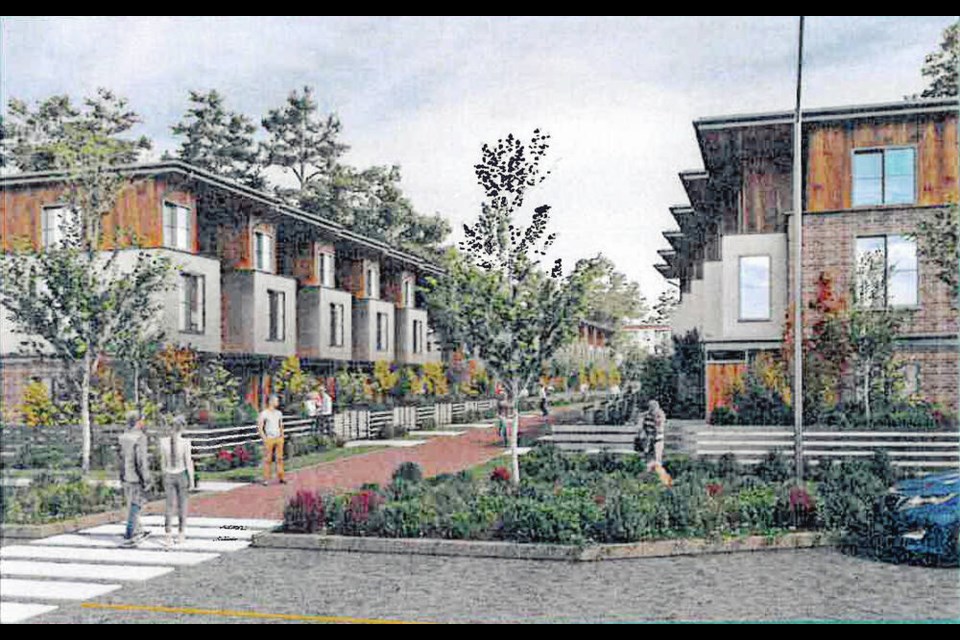A proposed development that would have seen more than 600 homes built over 10 to 15 years in Lantzville has failed after a tie vote at council.
Developer Langford Projects Ltd. did not win support from a majority of council at its July 25 meeting, despite scaling back the number of units to 632 from 730 on 23.3 hectares and promising a 50-unit seniors supportive-care building.
Council had decided in May to send the previous version of the Village South proposal to staff to work with the developer to address community concerns, including density issues, drainage, affordable housing and including assisted living for seniors.
At a public hearing in April, most speakers opposed the plan, saying it was too dense and did not suit their small community.
The revised proposal that council considered included commercial spaces, parks, a possible community centre and landscaping.
But the two-two vote meant the required changes to the official community plan did not go ahead, which effectively shut down the proposal for now.
The District of Lantzville borders Nanaimo’s northern boundary and has a population of slightly more than 3,800.
Mayor Mark Swain and Coun. Ian Savage opposed the revised plan, while councillors Jamie Wilson and Will Geselbracht were in favour. Coun. Karen Proctor did not take part because she has a property near the development site.
Savage said the next council — to be elected during province-wide municipal elections on Oct. 15 — will be able to take on the task of advancing the project to suit both residents and the developer.
“They can create a masterpiece which will also be highly profitable for the developer.”
Savage called the current proposal an “inadequate, below average, disjointed assembly of unknown building types.”
“We look forward to working with the developer after the election to create something unique, special and profitable.”
Swain expressed concern that apartment-style housing units would dominate residential development, with more than 60 per cent of the units in that form. “This is most certainly not what I envisioned for Lantzville.”
He also spoke in favour of more affordable housing.
Wilson urged council to vote in favour of the project, saying that if it failed now, it would likely return to council in 10 or 20 years with a higher density. Voting no “invites way more density later on,” Wilson said.
“Do you think the pressure of density is going to be less in 10 to 20 years? Do you think infrastructure costs are going to be less?”
The proposal would bring vitality and density to the area, which would attract businesses, he said.
Geselbracht raised the possibility that the province could move independently to authorize construction of housing units as part of its commitment to addressing the housing crisis. If that happened, the proposed 632-unit project “might seem like it was a great deal.”
Benefits to the district would include $26 million spent on civil works during the 10-to-15-year planned build-out and $9.6 million in development cost charges, which would go into such projects as upgraded infrastructure and parks.
Village South would bring more diversity to the community and jobs, he said.
“To me, that is the most important thing.”
>>> To comment on this article, write a letter to the editor: [email protected]



